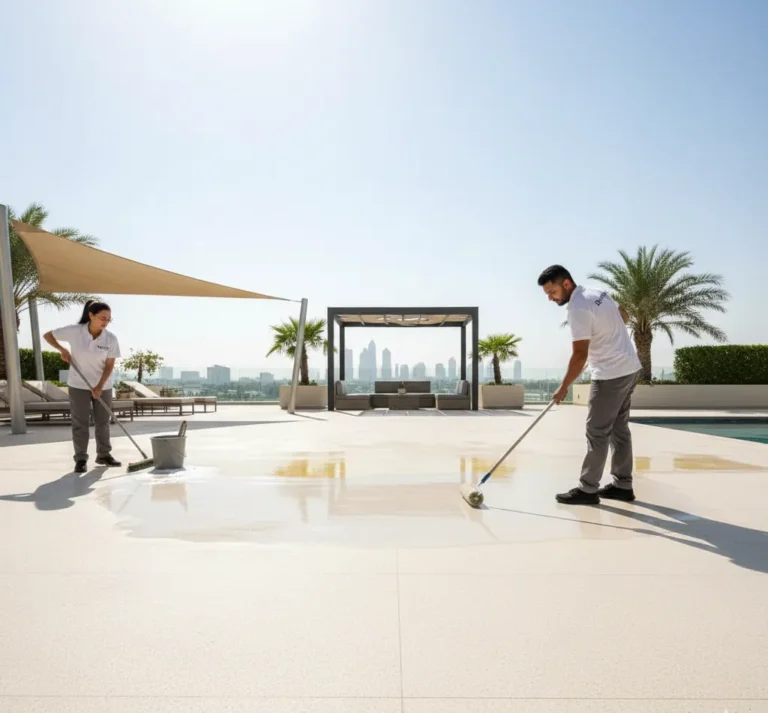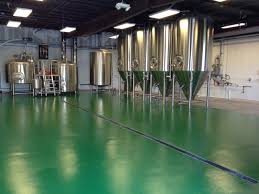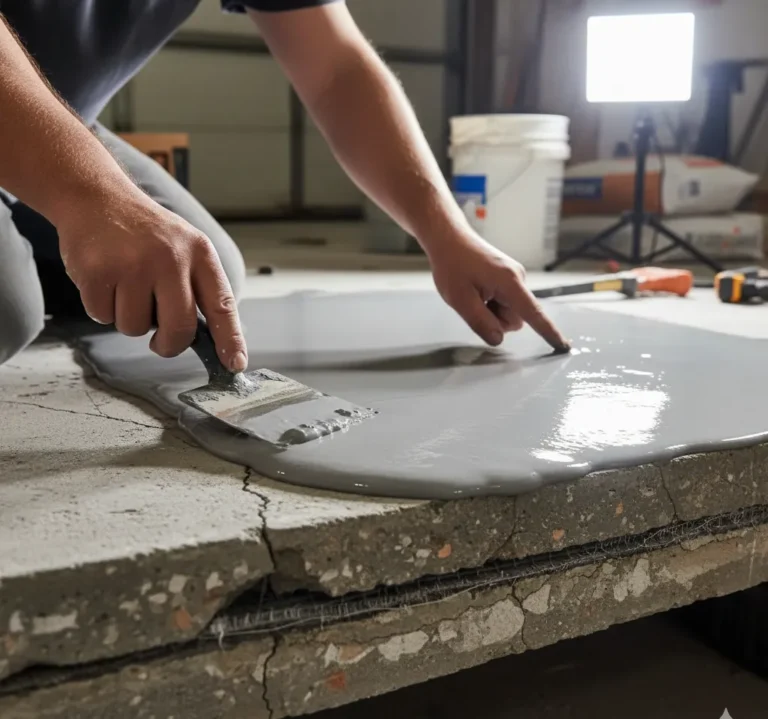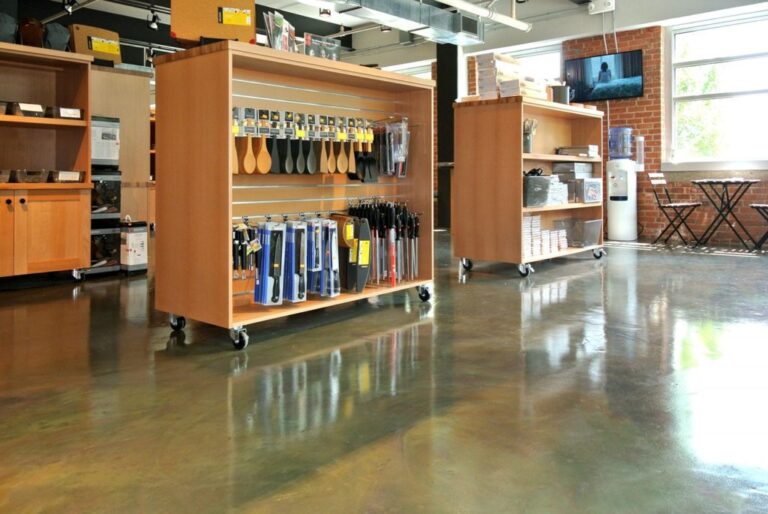Polyaspartic Polyurea vs Epoxy Floor
Introduction
Floor coatings are essential for protecting and enhancing the appearance of various surfaces, especially in high-traffic areas like garages, basements, and commercial spaces. Choosing the right floor coating can significantly impact the longevity, aesthetics, and safety of your floors. In this article, we will delve into a comprehensive comparison between polyaspartic polyurea and epoxy floor coatings to help you make an informed decision. Polyurethane epoxy comparison Polyurethane is softer and more flexible while epoxy is harder and more durable both are used as coatings but have different strengths depending on the project Commercial industrial epoxy distinctions Commercial epoxy is used for smaller projects at home while industrial epoxy is stronger and used for big jobs in factories and warehouses
Plywood epoxy considerations When using epoxy on plywood make sure the wood is clean and dry before applying the epoxy to ensure a strong bond and avoid bubbles or peeling later on Durable epoxy flooring is a tough and long-lasting floor coating that protects concrete surfaces
Residential epoxy benefits Epoxy floors elevate villa luxury by adding a smooth shiny surface that looks fancy and expensive These special floors make homes feel more high-end and modern Epoxy flooring beautifies villas by adding a shiny and colorful surface to the floors It makes the villa look fancy and new without changing anything else
Robust epoxy flooring Durable retail epoxy is a strong glue-like material used in stores and shops It helps stick things together and creates tough surfaces that last a long time Durable salon epoxy is a strong and long-lasting floor coating used in hair salons It protects the floor from spills and damage while giving a shiny professional look
Salon epoxy designs are special patterns made with shiny resin on salon floors These designs make hair salons look fancy and are easy to clean Metallic epoxy flooring is a shiny and colorful type of floor coating that looks like swirling metal It makes regular floors look fancy and is very strong and easy to clean
Chemical resistant epoxies Flooring UAE comparison helps people choose the best floors for their homes and offices by looking at different types prices and quality from many companies in the UAE Epoxy polyaspartic comparison Epoxy and polyaspartic are both floor coatings but polyaspartic dries faster and is more flexible while epoxy is thicker and cheaper
Polyaspartic Polyurea vs Epoxy Floor: A Comprehensive Comparison
Definition and Composition of Polyaspartic Polyurea and Epoxy Floor Coatings
Polyaspartic polyurea is a type of polyurea that is modified with aliphatic polyisocyanate, making it highly durable and UV stable. It is known for its rapid curing time and excellent resistance to chemicals and abrasion.
Epoxy floor coatings are made from a combination of epoxy resin and a hardening agent. They form a rigid, durable surface that is resistant to wear and tear, making them a popular choice for industrial and commercial applications.
Key Differences:
- Curing Time: Polyaspartic polyurea cures much faster than epoxy.
- UV Stability: Polyaspartic polyurea offers better UV resistance, preventing yellowing over time.
- Durability: Both are durable, but polyaspartic polyurea generally offers superior resistance to chemicals and abrasion.
Floor Protection and Durability
Which Coating Offers Better Floor Protection?
Polyaspartic polyurea coatings provide superior floor protection due to their high resistance to chemicals, abrasion, and impact. They are ideal for environments where floors are subjected to heavy use and harsh conditions.
Epoxy coatings also offer excellent protection but may not be as resistant to certain chemicals and UV exposure as polyaspartic polyurea.
Why Polyaspartic Polyurea Coatings Last Longer:
- Chemical Resistance: Polyaspartic polyurea is highly resistant to a wide range of chemicals.
- Abrasion Resistance: It can withstand heavy traffic and impact without significant wear.
- UV Stability: It does not yellow or degrade when exposed to sunlight.
Appearance and Customization
Polyaspartic Polyurea vs Epoxy Coating Appearance Comparison
Polyaspartic polyurea coatings offer a glossy, clear finish that enhances the appearance of the underlying surface. They are available in various colors and can be customized with decorative flakes or quartz.
Epoxy coatings also provide a glossy finish but may yellow over time if exposed to UV light. They are available in a wide range of colors and can be customized with different textures and patterns.
Customization Options for Floor Coatings:
- Polyaspartic Polyurea:
- Decorative flakes
- Quartz
- Various colors
- Epoxy:
- Metallic finishes
- Textured patterns
- Wide color range
Application Process
Differences in the Application Processes
The application process for polyaspartic polyurea is faster and more efficient due to its rapid curing time. It typically involves fewer steps and can be completed in a shorter timeframe compared to epoxy.
Epoxy coatings require a more extended application process, including multiple layers and longer curing times between each layer.
The 5-Step Duraamen Floor Coating Application Process:
- Surface Preparation: Cleaning and repairing the floor.
- Primer Application: Applying a primer to ensure proper adhesion.
- Base Coat Application: Applying the base coat of polyaspartic polyurea or epoxy.
- Decorative Layer: Adding decorative flakes or quartz (optional).
- Top Coat Application: Applying the final top coat for protection and finish.
Curing and Turnaround Times 
Comparison of Curing and Turnaround Times
Polyaspartic polyurea coatings cure much faster than epoxy, often within a few hours. This rapid curing time allows for a quicker turnaround, making it ideal for projects with tight deadlines.
Epoxy coatings require a longer curing time, typically 24-48 hours for each layer, resulting in a longer overall application process.
How Much Does Temperature Affect the Application Process?
- Polyaspartic Polyurea: Less affected by temperature variations, allowing for consistent application in different climates.
- Epoxy: More sensitive to temperature changes, which can affect curing times and application quality.
DIY Feasibility
Can You DIY These Garage Floor Coatings?
While epoxy coatings can be a DIY project with the right tools and preparation, polyaspartic polyurea is best applied by professionals due to its fast curing time and specific application requirements.
Why You Shouldn’t DIY Polyaspartic Polyurea Coatings:
- Rapid Curing: Requires quick and precise application.
- Specialized Equipment: Professional tools and techniques are needed.
- Experience: Professional expertise ensures a high-quality finish.
Floor Penetration and Bonding
Floor Penetration and Bonding Comparison
Polyaspartic polyurea coatings penetrate deeper into the concrete, creating a stronger bond and better adhesion. This results in a more durable and long-lasting coating.
Epoxy coatings also provide good adhesion but may not penetrate as deeply into the concrete, potentially leading to issues with peeling or delamination over time.
How Well Do These Coatings Seal Garage Floors?
- Polyaspartic Polyurea: Excellent sealing properties, preventing moisture and contaminants from penetrating the concrete.
- Epoxy: Good sealing properties but may require more maintenance to prevent issues.
Flexibility and Maintenance
Polyaspartic Polyurea vs Epoxy: Which One is More Flexible?
Polyaspartic polyurea coatings are more flexible than epoxy, allowing them to withstand temperature fluctuations and minor movements in the concrete without cracking.
Epoxy coatings are more rigid and may be prone to cracking under similar conditions.
Ease of Maintenance Comparison:
- Polyaspartic Polyurea:
- Less frequent maintenance required
- Easy to clean and maintain
- Epoxy:
- Requires regular maintenance
- May need periodic reapplication
Traction and Safety
Which Garage Floor Coating Provides Better Traction?
Polyaspartic polyurea coatings can be customized with anti-slip additives to provide excellent traction, making them a safer option for garage floors.
Epoxy coatings can also be made slip-resistant with the addition of textured finishes or anti-slip additives.
Safety Considerations for Garage Floor Coatings:
- Polyaspartic Polyurea:
- Customizable traction
- Resistant to slips and falls
- Epoxy:
- Textured finishes available
- Can be made slip-resistant
UV Stability and Environmental Impact 
UV Stability and Color Stability Comparison
Polyaspartic polyurea coatings offer superior UV stability, preventing yellowing and degradation over time. This makes them ideal for areas exposed to sunlight.
Epoxy coatings may yellow and degrade when exposed to UV light, affecting their appearance and longevity.
How Environmentally-Friendly is Each Floor Coating?
- Polyaspartic Polyurea:
- Lower VOC emissions
- More environmentally friendly
- Epoxy:
- Higher VOC emissions
- Less eco-friendly
Vertical Applications and Affordability
Can You Use These Floor Coatings for Vertical Applications?
Polyaspartic polyurea coatings can be used for vertical applications, providing a seamless and durable finish on walls and other vertical surfaces.
Epoxy coatings are generally not recommended for vertical applications due to their thicker consistency and longer curing times.
What is the Most Affordable Garage Floor Coating?
- Polyaspartic Polyurea:
- Higher initial cost
- Long-term savings due to durability and low maintenance
- Epoxy:
- Lower initial cost
- May require more frequent maintenance and reapplication
FAQs
What are the main differences between polyaspartic polyurea and epoxy floor coatings?
Polyaspartic polyurea offers faster curing times and better UV stability compared to epoxy. It is also more resistant to chemicals and abrasion, making it a more durable option for high-traffic areas.
Which floor coating is more durable, polyaspartic polyurea or epoxy?
Polyaspartic polyurea is generally more durable and resistant to wear and tear than epoxy. Its superior chemical resistance and flexibility make it a better choice for environments subjected to heavy use and harsh conditions.
Can I apply polyaspartic polyurea or epoxy floor coatings myself?
While epoxy can be a DIY project with the right tools and preparation, polyaspartic polyurea is best applied by professionals due to its fast curing time and specific application requirements. Professional application ensures a high-quality finish and long-lasting durability.
How do polyaspartic polyurea and epoxy floor coatings compare in terms of maintenance?
Both coatings are relatively easy to maintain, but polyaspartic polyurea may require less frequent maintenance due to its durability. Regular cleaning and occasional reapplication of the top coat can keep both types of coatings in good condition.
Are polyaspartic polyurea and epoxy floor coatings environmentally friendly?
Polyaspartic polyurea coatings are generally more environmentally friendly due to lower VOC emissions compared to epoxy. They offer a more sustainable option for floor coatings, especially in areas where environmental impact is a concern.





